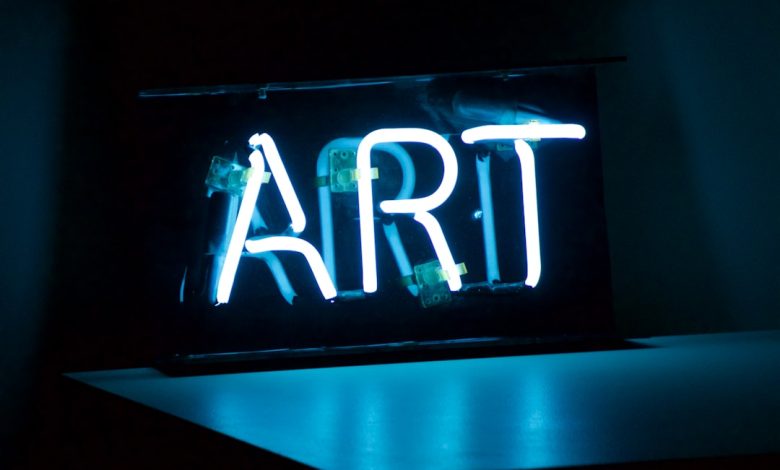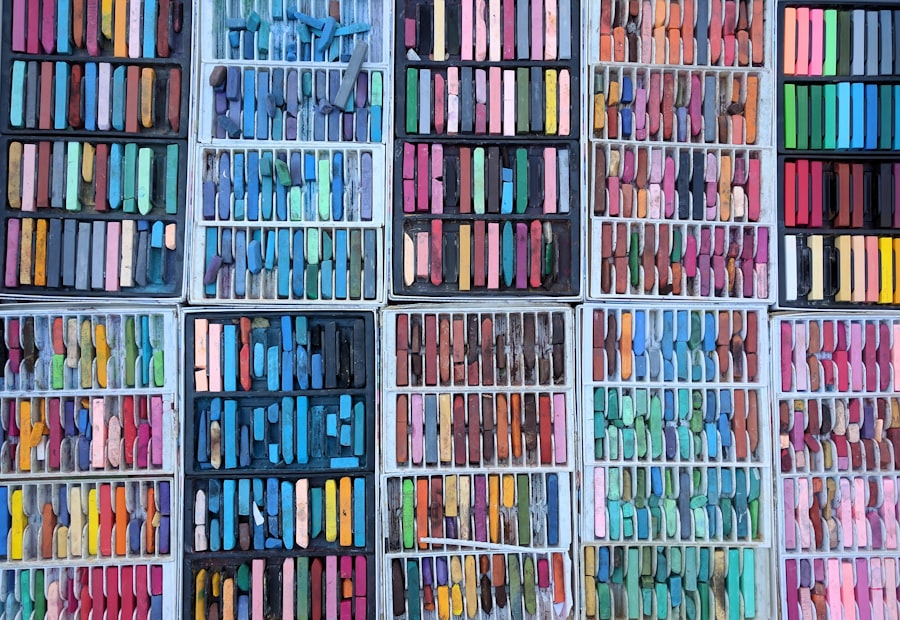Unlocking the Power of Image Generation

Image generation refers to the process of creating visual content through various means, including traditional artistic methods and modern technological approaches. At its core, image generation encompasses a wide array of techniques that can produce anything from simple graphics to complex, photorealistic images. The evolution of image generation has been significantly influenced by advancements in technology, particularly in the realm of computer graphics and artificial intelligence.
This transformation has enabled artists, designers, and technologists to explore new creative avenues and push the boundaries of visual expression. Historically, image generation was primarily the domain of skilled artists who utilized tools such as paint, pencils, and cameras to create visual representations of their ideas. However, with the advent of digital technology, the landscape began to shift dramatically.
Software applications like Adobe Photoshop and Illustrator revolutionized the way images were created and manipulated, allowing for greater flexibility and experimentation. As technology continued to advance, the introduction of algorithms and machine learning models further expanded the possibilities of image generation, leading to the emergence of entirely new forms of art and design.
Key Takeaways
- Image generation refers to the process of creating new images using algorithms and data.
- Artificial intelligence plays a crucial role in image generation by enabling machines to learn and generate realistic images.
- Image generation has diverse applications in industries such as healthcare, entertainment, and design, among others.
- In marketing and branding, image generation is important for creating visually appealing content and enhancing brand identity.
- Image generation has the potential to revolutionize creativity by enabling artists and designers to explore new possibilities and styles.
The Role of Artificial Intelligence in Image Generation
Artificial intelligence (AI) has become a pivotal force in the field of image generation, enabling machines to create images that can rival those produced by human artists. AI algorithms, particularly those based on deep learning techniques such as Generative Adversarial Networks (GANs), have demonstrated remarkable capabilities in generating high-quality images from scratch. These networks consist of two components: a generator that creates images and a discriminator that evaluates their authenticity.
Through iterative training, the generator learns to produce increasingly realistic images while the discriminator becomes better at distinguishing between real and generated images. One notable example of AI’s impact on image generation is the development of tools like DALL-E and Midjourney. These models can generate images based on textual descriptions, allowing users to input phrases or concepts and receive corresponding visual representations.
This capability not only streamlines the creative process but also democratizes art creation, enabling individuals without traditional artistic skills to produce compelling visuals. The implications of AI in image generation extend beyond mere aesthetics; they challenge our understanding of creativity and authorship in the digital age.
Applications of Image Generation in Various Industries
The applications of image generation span a multitude of industries, each leveraging this technology to enhance their operations and offerings. In the entertainment sector, for instance, filmmakers and game developers utilize image generation techniques to create stunning visual effects and immersive environments. By employing AI-generated imagery, creators can visualize complex scenes that would be prohibitively expensive or time-consuming to produce using traditional methods.
This not only enhances storytelling but also allows for greater creative freedom. In the fashion industry, image generation plays a crucial role in designing clothing and accessories. Brands can use AI to generate virtual models wearing their latest collections, enabling them to showcase products without the need for physical samples.
This approach not only reduces costs but also accelerates the design process, allowing brands to respond more swiftly to changing consumer trends. Additionally, retailers can employ image generation to create personalized marketing materials tailored to individual customer preferences, enhancing engagement and driving sales.
The Importance of Image Generation in Marketing and Branding
In today’s visually driven marketplace, effective marketing and branding rely heavily on compelling imagery. Image generation has emerged as a vital tool for marketers seeking to capture consumer attention and convey brand messages effectively. By utilizing AI-generated visuals, brands can create eye-catching advertisements that resonate with their target audience.
These images can be tailored to reflect current trends or specific demographics, ensuring that marketing campaigns are both relevant and impactful. Moreover, image generation allows for rapid content creation at scale. In an era where consumers are inundated with information, brands must consistently produce fresh visuals to maintain engagement.
AI-powered tools can automate this process, generating a variety of images that align with a brand’s identity while saving time and resources. This capability is particularly beneficial for social media marketing, where the demand for new content is relentless. By harnessing image generation technology, brands can stay ahead of the competition and foster a strong visual presence across multiple platforms.
Exploring the Creative Potential of Image Generation
The creative potential of image generation is vast and continues to expand as technology evolves. Artists and designers are increasingly embracing AI as a collaborative partner in their creative processes. Rather than viewing AI as a replacement for human creativity, many see it as a tool that can augment their artistic vision.
For instance, artists can use AI-generated images as inspiration or starting points for their work, allowing them to explore new styles and concepts that they may not have considered otherwise. Furthermore, image generation opens up new avenues for experimentation in art forms such as generative art and interactive installations. Artists can create dynamic pieces that evolve over time or respond to viewer interactions, blurring the lines between creator and audience.
This interactivity fosters a deeper engagement with art, inviting viewers to participate in the creative process rather than passively consume it. As artists continue to push the boundaries of what is possible with image generation, we can expect to see innovative works that challenge traditional notions of authorship and artistic expression.
Ethical Considerations in Image Generation
As with any technological advancement, the rise of image generation raises important ethical considerations that must be addressed. One significant concern is the potential for misuse of AI-generated imagery. The ability to create hyper-realistic images raises questions about authenticity and trust in visual media.
For instance, deepfakes—manipulated videos or images that convincingly depict individuals saying or doing things they never actually did—pose serious risks in terms of misinformation and privacy violations. Additionally, there are concerns regarding copyright and intellectual property rights in the context of AI-generated content. As machines generate images based on existing datasets, questions arise about ownership and attribution.
If an AI model creates an artwork based on thousands of existing images, who holds the rights to that creation? These ethical dilemmas necessitate ongoing discussions among artists, technologists, policymakers, and society at large to establish guidelines that protect both creators’ rights and public interests.
Tools and Technologies for Image Generation
The landscape of image generation is populated with a diverse array of tools and technologies designed to cater to various needs and skill levels. Software applications like Adobe Photoshop remain staples for traditional digital artists, offering powerful features for image manipulation and creation. However, newer tools specifically designed for AI-driven image generation have gained prominence in recent years.
Platforms such as Runway ML provide accessible interfaces for artists and designers to experiment with machine learning models without requiring extensive programming knowledge. These tools often come equipped with pre-trained models that can generate images based on user inputs or modify existing visuals in innovative ways. Additionally, open-source frameworks like TensorFlow and PyTorch enable developers to build custom image generation models tailored to specific applications or artistic visions.
The rise of online communities dedicated to sharing AI-generated art has also fostered collaboration among creators. Platforms like Artbreeder allow users to blend images together using genetic algorithms, resulting in unique creations that reflect collective input from multiple users. This collaborative aspect not only enhances creativity but also democratizes access to advanced image generation techniques.
The Future of Image Generation: Trends and Innovations
Looking ahead, the future of image generation is poised for exciting developments driven by ongoing advancements in technology and shifts in creative practices. One notable trend is the increasing integration of augmented reality (AR) and virtual reality (VR) with image generation techniques. As these technologies become more mainstream, we can expect immersive experiences that blend real-world environments with AI-generated visuals, creating new forms of storytelling and interaction.
Moreover, advancements in natural language processing (NLP) will likely enhance the capabilities of text-to-image generation models. As these systems become more sophisticated in understanding context and nuance within language, they will be able to produce even more accurate and relevant visual representations based on user prompts. This evolution will further empower creators across various fields by providing them with intuitive tools for translating ideas into compelling imagery.
Additionally, as ethical considerations continue to shape discussions around AI-generated content, we may see the emergence of regulatory frameworks aimed at ensuring responsible use of these technologies. Striking a balance between innovation and ethical responsibility will be crucial as society navigates the complexities introduced by image generation. In conclusion, image generation stands at the intersection of art and technology, offering unprecedented opportunities for creativity while also posing significant challenges that require careful consideration.
As we move forward into an increasingly digital future, the role of image generation will undoubtedly continue to evolve, shaping how we create, consume, and understand visual content in our lives.
If you are interested in learning more about crafting engaging social media content, you may want to check out this article on Crafting Engaging Social Media Content. This article provides valuable tips and strategies for creating compelling visuals and messages that will resonate with your audience. Image generation plays a crucial role in social media content creation, as visually appealing graphics can help capture the attention of users scrolling through their feeds. By incorporating high-quality images into your social media posts, you can increase engagement and drive more traffic to your website.
FAQs
What is image generation?
Image generation refers to the process of creating new images using computer algorithms and techniques. This can include generating images from scratch, modifying existing images, or creating images based on specific parameters or inputs.
What are some common techniques used for image generation?
Some common techniques used for image generation include generative adversarial networks (GANs), variational autoencoders (VAEs), deep learning, and procedural generation. These techniques can be used to create realistic images, abstract art, or even generate images based on specific styles or characteristics.
What are the applications of image generation?
Image generation has a wide range of applications, including in the fields of art and design, computer graphics, video game development, medical imaging, and data visualization. It can also be used for creating synthetic training data for machine learning models and for generating images for advertising and marketing purposes.
What are some challenges in image generation?
Some challenges in image generation include creating realistic and high-quality images, controlling the output of the generation process, and ensuring diversity and novelty in the generated images. Additionally, ethical considerations around the use of generated images and potential biases in the generated data are also important challenges to consider.
What are some popular tools and libraries for image generation?
Some popular tools and libraries for image generation include TensorFlow, PyTorch, Keras, OpenCV, and various GAN libraries such as DCGAN, StyleGAN, and BigGAN. These tools provide a range of functionalities for image generation, including pre-trained models, optimization algorithms, and image manipulation capabilities.







